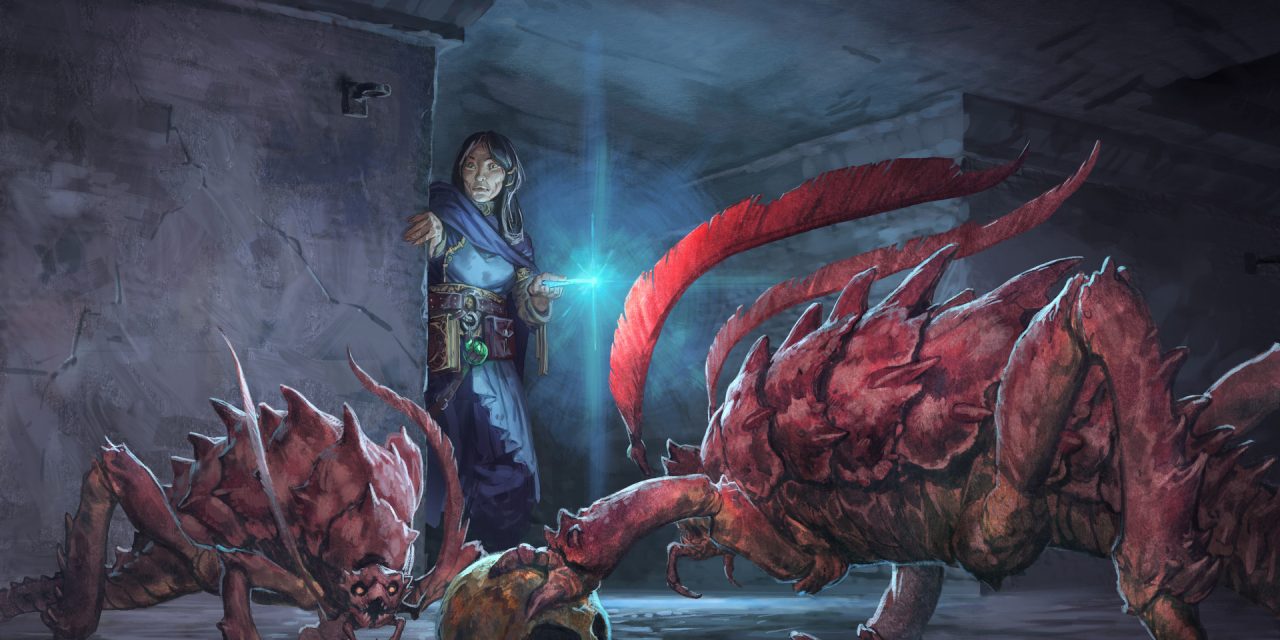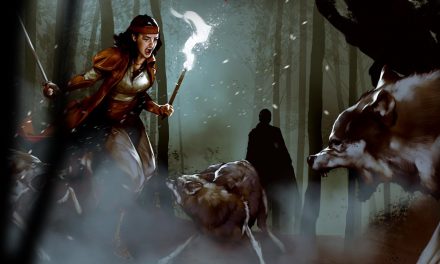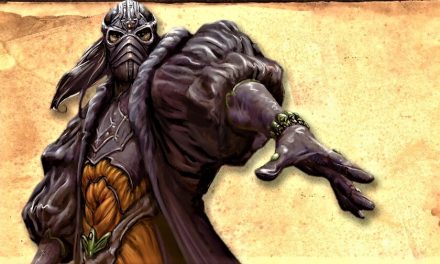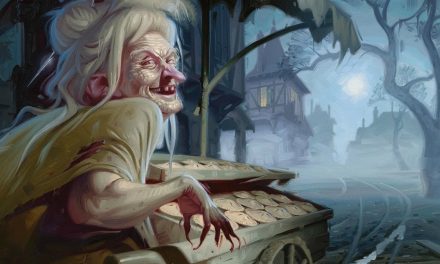The Rust Monsters of D&D are creatures so infamous that even the most well-armored adventurers run in fear.
Or should I say “especially the most well-armored adventurers”?
Scavenging dark underground passageways in search of metal to eat, the skittering sound of these monsters will send a chill up the spine of any adventurer who has metal on them.
Today we take a closer look at a D&D classic: the Rust Monster.
Rust Monster Appearance
The Rust Monster resembles a type of monstrous, brown cockroach. As a medium-sized monstrosity, these creatures are about five feet long and three feet tall. With a thick outer shell and a long tail ending in bony protrusions, these critters are hardier than you might initially think.
But it’s their two long, feathery antennae that cause the most fear. In addition to helping them navigate, the Rust Monster uses its antennae to corrode any metal that they touch.
Rust Monster Behavior
Rust Monsters are driven exclusively by instinct and their search for food. They will not be making attempts to ambush the party, but they will quickly begin to rush an adventurer that they detect metal on.
As scavengers, Rust Monsters favor dark, subterranean environments where they can eat the armor and weapons of those passing through. Humanoids like Dwarves or Drow that commonly live in these areas know to be extra careful when bringing metal near a location that is known to have Rust Monsters.
Those who fall victim to the other horrors of these subterranean passages, however, often leave tasty bits of armor and weaponry behind. Rust Monsters that nest near these more fearsome creatures may often get a steady supply of food as a result of this symbiotic relationship.
Because most creatures find the Rust Monster to be harmless and unappetizing, these relationships aren’t uncommon. The Monster Manual even states that Rust Monsters that are treated well and regularly fed may even become companions or pets.
I’m not sure how well having a pet Rust Monster would work in a party, but it would certainly be interesting. No doubt, most party members would have concerns about keeping something nearby that wants to eat their 1500gp Plate Armor. But this does present an interesting concept for a villain in a subterranean environment who keeps a few of these on hand as pets.
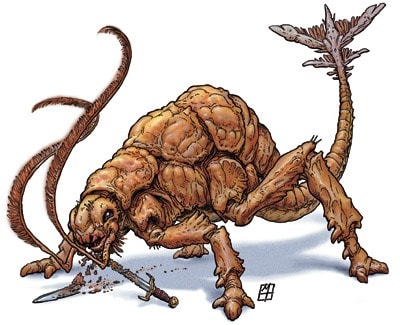
Are Rust Monsters Aggressive?
When the Rust Monster smells metal, it rushes towards it. They love ferrous metals like iron, steel, adamantine, and mithral. The only metals immune to the Rust Monster’s corroding antennae are those that are magical.
As an absolute last resort, the Rust Monster does have a bite attack. However, as the party are fighting them off, the Rust Monster is more likely to run away with the Dash action than it is to stand and fight.
It’s keeping their antennae away from your armor and weapons in the meantime that makes them so terrifying and infamous.
Those who do not have metal on them are largely ignored by Rust Monsters. In an encounter, they will focus on whatever the single greatest source of metal is. More often than not, this will be the party’s Paladin, Cleric or Fighter.
For those who do have metallic weapons or armor, the Rust Monster does get aggressive. They hiss and screech as they skitter towards whatever character has the most metal on them. With their antennae rubbing against the metal, they begin to feast. While this won’t damage the character, it can quickly weaken and destroy their equipment.
Rust Monsters Favor Small Numbers
It is worth nothing that Rust Monsters generally favor small numbers. They are prone to be encountered individually or in a small group. Because of this, it’s unlikely that you will find a large nest of them.
By the time the party is level 5, Rust Monsters aren’t really going to be anything more than pests. However, this does tie well with the concept of them being kept as pets.
Pests or not, a fight with a villain who has these in their lair creates a terrible choice for the party. They can attempt to focus down the enemy but risk the Rust Monsters closing in and destroying their equipment. If they instead focus on the Rust Monsters, the villain and their minions are able to put out more damage before the party can start fighting back.
The Rust Monsters’ Antennae
Rust Monsters corrode metal by rubbing their feathery antennae against it.
This does not affect magical metals, but it can quickly corrode any ferrous metal that is not protected by such enchantment. In D&D, this means that anything containing iron, steel, adamantine, or mithral is affected.
Objects that are not being worn or carried, such an iron vein in a mine, are destroyed in 1-foot cubic increments upon being touched. If a metallic object is being worn or carried, the creature carrying the item must succeed on a DC 11 Dexterity saving throw.
Armor and shields that are affected by the Rust Monster’s antennae take a -1 penalty to the protection that they provide the character. It is worth noting that this is both permanent and cumulative. As the fight goes on, the armor will be less effective and possibly become useless.
If Armor is reduced to an AC of 10, it is destroyed. Similarly, a shield that is reduced to providing a +0 bonus is destroyed.
Weapons are also affected by the permanent and cumulative effects of the Rust Monster’s antennae.
After dealing damage to a Rust Monster, a nonmagical metal weapon takes a -1 penalty to its damage rolls. If the weapon reaches a -5 penalty, it is destroyed. Ammunition like arrow heads and crossbow bolts are destroyed after dealing damage and cannot be salvaged after the fight.
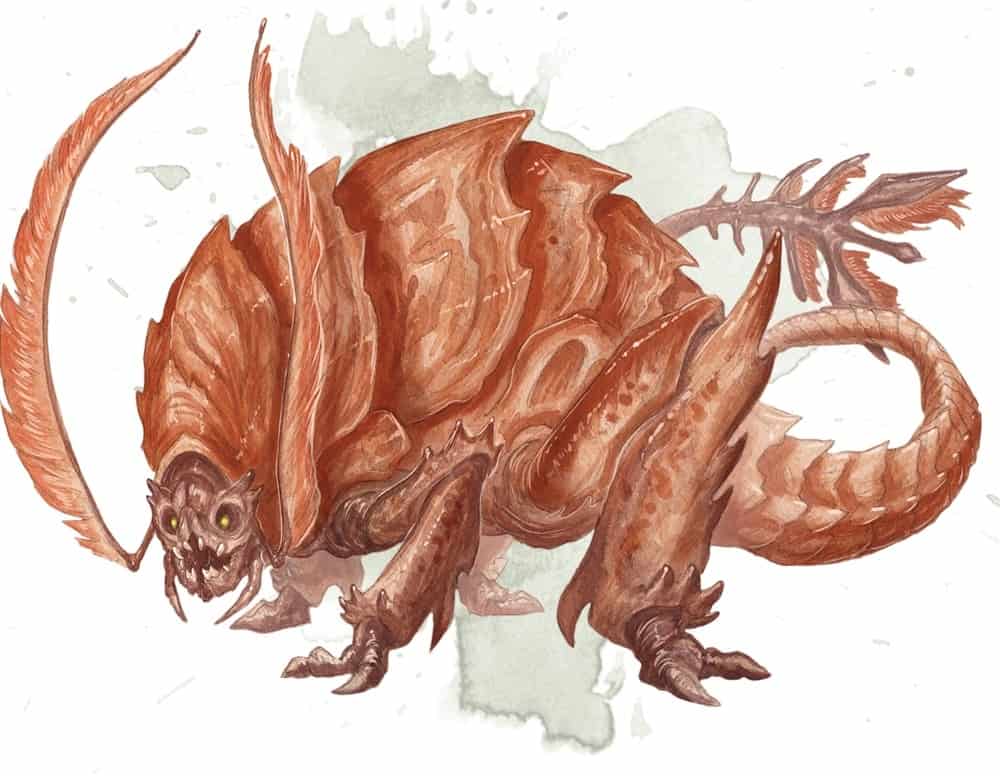
Of Rust Monsters and Warforged Characters
Without fail, the question always seems to come up about Rust Monsters and Warforged characters.
You might think that the seemingly most-harmless Rust Monster could absolutely destroy a Warforged character, but this is worth looking closer at.
I would generally rule that a Rust Monster’s corroding antennae effect does not affect a Warforged.
While Warforged are made of metal and other materials, they are still considered humanoids. As explained in Eberron: Rising from the Last War, they still benefit from resting, healing, and Medicine checks as any humanoid would.
If you still take issue with this, one can easily reason that the manufacturing process that creates a Warforged is enough enchantment to protect against the effects of a Rust Monster.
Plus, the alternative would likely be randomly instant-killing a character and that’s not particularly fun for anyone that isn’t an Executioner DM.
Could Rust Monsters Make For an Interesting Plot Point for a Warforged Character?
That said, this is still your group’s game.
If it adds to the story in a meaningful way, it could be interesting to have Rust Monsters’ antennae effect a Warforged character.
The DM and the Player should always talk about this first. No player wants to have their character become a rusted pile of screeching metal with severe penalties to everything.
But if the Player trusts the DM to do so responsibly, this could create an interesting challenge and plot point. It would become necessary for the party to assist their Warforged friend as they continue through the dungeon.
Later in the dungeon or at the end of it, the Warforged and their party may find some kind of Macguffin to restore or (ideally) upgrade themselves.
This is entirely up to what makes the story interesting for the group. If the Player gives consent to undertake this kind of challenge, it can add a great challenge to the group’s endeavor. However, this consent should never be assumed.
Conclusion – Rust Monsters in D&D 5e
So there you have it!
The Rust Monster contributes a rare but terrifying aspect to encounters in your D&D game. The threat of having one’s weapons or armor destroyed is something that is sure to create some dynamic tension at your table.
While Rust Monsters will not necessarily be stalking the party, you can still be very clever with them.
A party that rounds a corner to have their armor smelled by these monsters will find themselves quickly having to fend off the hungry insect-like creatures. Some pit traps, for example, may have Rust Monsters lurking at the bottom that will begin corroding a victim’s gear as they try to quickly work their way out of the pit.
While Rust Monsters are unlikely to kill a character, stripping an adventurer of their armor and weapons’ effectiveness makes encounters deeper into the dungeon even more deadly.

